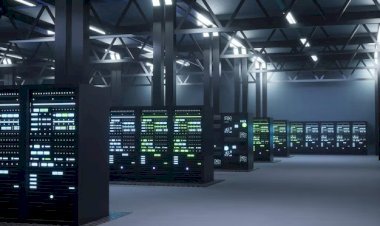The Pros and Cons of Buying a Distressed Business vs. Starting a New One
Discover the pros and cons of buying a distressed business versus starting a new one. Learn about the advantages, challenges, and key considerations to make an informed decision. Ideal for aspiring entrepreneurs weighing their options.

Deciding whether to buy a distressed business or start a new one is a major crossroads for aspiring entrepreneurs. Both paths offer unique opportunities — and significant risks. For some, acquiring a struggling company might be a shortcut to market entry, complete with existing infrastructure, customers, and brand presence. For others, building a business from the ground up offers the freedom to shape every detail according to a fresh vision.
In today’s fast-moving economy, especially in 2025 where market volatility and digital transformation are reshaping industries, understanding your options is more important than ever. Entrepreneurs need to consider not just financial investment, but also the time, expertise, and risk tolerance each route demands.
This article will guide you through the pros and cons of buying a distressed business versus starting a new one from scratch. We'll explore the benefits, pitfalls, financial implications, and strategic considerations of each — helping you make a well-informed decision that aligns with your goals, capabilities, and vision for the future.
Understanding Distressed Businesses

Image source: pinterest.com
A distressed business is typically a company that is facing serious financial or operational difficulties. These challenges can arise from a variety of reasons, including poor leadership decisions, declining demand for products or services, ineffective marketing, high levels of debt, or shifts in the market due to economic downturns or competition. In some cases, external events such as regulatory changes, supply chain disruptions, or global crises (like the COVID-19 pandemic) can also push a business into distress.
Despite the negative connotations, purchasing a distressed business can present a strategic opportunity for savvy entrepreneurs and investors. Because these businesses are often sold at a significantly reduced price, they can offer excellent value for those willing to take on the risk. Buyers may benefit from acquiring valuable assets — such as equipment, intellectual property, and customer relationships — at a fraction of their original cost.
However, turning around a distressed business is rarely easy. It requires a clear understanding of the root causes of the decline, a realistic turnaround plan, and the resources (both financial and managerial) to implement it. For the right person with the right skill set, though, a distressed business can be transformed into a profitable venture — making it a potentially rewarding, if challenging, path to entrepreneurship.
Pros of Buying a Distressed Business
Lower Purchase Price

Image source: pinterest.com
Distressed businesses are often sold at significantly lower prices than their actual market value, primarily because the current owners are eager to exit quickly due to ongoing losses, mounting debts, or unsustainable operations. This creates a unique opportunity for potential buyers to step in and purchase an existing business — sometimes for pennies on the dollar — without the high upfront investment typically required for launching a company from scratch.
By acquiring a distressed business, buyers may gain access to valuable assets such as equipment, inventory, intellectual property, and even commercial real estate, all at a reduced cost. These assets might still hold considerable worth, despite the company’s operational struggles. Additionally, many distressed businesses come with an established customer base, supplier relationships, and brand recognition, which can significantly shorten the time and money needed to reach profitability.
For entrepreneurs with the right strategy, experience, and risk tolerance, this price advantage can be a smart way to enter a market or expand an existing business. However, it’s important to conduct thorough due diligence to ensure that the reduced price accurately reflects the true value — and not hidden liabilities or costly problems down the road.
Existing Customer Base

Image source: pinterest.com
Acquiring a distressed business often includes taking over an existing customer base, which can be a major advantage for entrepreneurs looking to generate revenue quickly. Building a customer base from scratch is typically one of the most time-consuming and costly aspects of starting a new business. It involves extensive marketing, advertising, brand building, and trial-and-error strategies to attract and retain loyal customers. In contrast, when you purchase a distressed business, you may inherit a ready-made audience that is already familiar with the company’s products or services.
Even if the business has been struggling, the customer relationships may still be intact or salvageable. This gives the new owner a valuable head start — instead of spending months or years trying to build trust, they can focus on improving service quality, rebranding, or offering better value to reignite loyalty and boost sales. Additionally, data from past customer transactions, preferences, and feedback can provide deep insights into buying behavior, enabling more targeted marketing efforts.
However, it’s important to evaluate the quality of the customer base. If the business suffered from poor service or unreliable products, the customer list may have little long-term value. On the other hand, if the issues were operational or financial — and not related to customer satisfaction — the existing clientele could be a solid foundation for future growth.
Established Infrastructure

Image source: pinterest.com
When you buy a distressed business, you often get an already-built setup, which can save you a lot of time and money. This setup may include equipment, furniture, stock (inventory), and even trained staff. Instead of spending months or years buying tools, setting up systems, and hiring people, you can start working almost right away.
For example, if it’s a restaurant, the kitchen, tables, and appliances might already be there. If it’s a shop, the shelves, cash registers, and stock could already be in place. You also get access to business systems like suppliers, delivery services, and customer service processes — things that normally take time to build from scratch.
This existing infrastructure helps reduce the high costs that usually come with starting a new business and allows you to focus more on fixing problems, improving operations, and making profits sooner.
Cons of Buying a Distressed Business
Hidden Liabilities

Image source: pinterest.com
Buying a distressed business can sometimes mean taking on hidden problems that are not always clear at first. These problems are called “liabilities,” and they can include unpaid debts, legal troubles, or a bad reputation with customers or suppliers. For example, the business might owe money to banks, landlords, or suppliers. There could also be ongoing lawsuits or unhappy employees.
These hidden issues can end up costing you more money and time than you expected. You might have to spend a lot to fix legal matters, pay off old bills, or rebuild trust with customers who had bad experiences in the past. That’s why it’s very important to check everything carefully before buying — a process called due diligence. Knowing what you’re getting into helps you avoid surprises and plan better for the future.
Operational Challenges

Image source: pinterest.com
Turning around a distressed business is not an easy job. It takes a lot of hard work, the right skills, and enough money or resources to fix what’s broken. You may have to deal with many problems at once — like low sales, unhappy customers, outdated systems, or unmotivated staff. These issues can take time and energy to solve, and progress might be slow in the beginning.
To succeed, you need strong management skills and experience in solving business problems. You might have to change how the business works, improve customer service, rebrand the company, or train staff differently. This often requires hiring experts or investing in better technology, marketing, or operations.
Even after all that, success is not guaranteed. Some businesses are too damaged to fully recover, or the market may no longer support their products or services. That’s why buying a distressed business is always a risk — it can be very rewarding if done right, but it can also lead to losses if things don’t go as planned.
.
Market Perception

Image source: pinterest.com
A distressed business may already have a damaged reputation, which can be one of the hardest things to fix. This happens when customers had bad experiences before — maybe the service was poor, the products didn’t meet expectations, or the business didn’t deliver on time. When people lose trust in a brand, they often tell others or leave negative reviews online, which spreads quickly and harms the company’s image even more.
Even if you buy the business and make big improvements, people might still remember the past. It can take a long time to change their minds and show them that the business is now under new ownership and being run better. You’ll likely need to invest in rebranding, better customer service, marketing campaigns, and public relations to rebuild trust and confidence.
Gaining back customer loyalty doesn’t happen overnight. It requires patience, clear communication, and consistently positive experiences for your customers. But if done right, it can turn the business around and create a strong, fresh image in the market.
Starting a New Business

Image source: pinterest.com
Starting a new business means building everything from the ground up — your idea, your products or services, your brand, and the way the business works. You’re not taking over someone else’s company or problems. Instead, you get to design every part of the business exactly the way you want.
This approach gives you complete control over your business model, pricing, marketing, customer service, and overall brand identity. You can choose your target audience, create a fresh and modern image, and set up systems that match your goals and values. From choosing the company name and logo to picking the location and hiring staff, every decision is yours to make.
While starting from scratch can be challenging, it also gives you the freedom to be creative, flexible, and innovative. You’re not limited by past mistakes or bad reputations. If you have a clear plan and a strong vision, creating a new business can be an exciting and rewarding journey.
Pros of Starting a New Business
Full Control

Image source: pinterest.com
Starting a business from scratch gives you full control over every part of the business. This means you get to make all the important decisions, right from the beginning. You choose how your brand looks and feels — including the name, logo, colours, and message. You also decide how the business will operate daily, such as what products or services you’ll offer, how customers will be served, and how money will be managed.
You’re also in charge of shaping the company culture, which means deciding how employees will work together, what values the business will follow, and what kind of environment you want to create. Do you want a fun, creative team? A highly professional one? It’s completely up to you.
Additionally, you can build your own growth strategy, setting your goals and choosing how fast or slow you want to grow. You can test new ideas, adjust quickly when things change, and stay in control without having to fix someone else’s mistakes. This level of freedom is one of the biggest benefits of starting your own business from scratch.
Fresh Start

Image source: pinterest.com
Starting a new business gives you a clean slate, which means you’re not carrying any of the problems that an older or struggling business might have. There are no unpaid debts, legal issues, or unhappy customers from the past to worry about. This fresh start lets you focus completely on creating something new and positive, without having to fix old mistakes.
Because there’s no negative history, it’s much easier to build a strong and trustworthy brand image from the beginning. You can create your own reputation by offering great products or services, providing excellent customer service, and connecting with your audience in a meaningful way. Customers are more likely to give a new business a chance if it presents itself professionally and meets their needs.
You also have the freedom to set your own tone, voice, and message. Whether you want your brand to feel modern and trendy, friendly and personal, or professional and reliable — the choice is yours. With a clean start, you can build a business that reflects your values and vision without any baggage holding you back.
Flexibility

Image source: pinterest.com
New businesses are usually more flexible and can quickly adjust to changes, which is a big advantage in today’s fast-moving world. Unlike large or older companies that may have fixed systems and slow processes, a new business can try new things, make fast decisions, and respond to customer needs more easily.
For example, if customers start asking for a different product or a new feature, a small or new business can often make that change quickly without going through a lot of steps. If the market shifts — like new trends, new technology, or new competitors — a flexible business can change its plans, update its services, or try new ideas to stay ahead.
This ability to move fast and stay updated helps new businesses compete with bigger companies, even with fewer resources. Being flexible also helps you test different strategies to see what works best, and make improvements faster based on customer feedback.
Cons of Starting a New Business
Higher Initial Costs

Image source: pinterest.com
Starting a new business usually needs a lot of money in the beginning. This is because you have to build everything from scratch. You may need to rent or buy a space, purchase equipment, stock up on products, build a website, and hire staff. All of this is called setting up your infrastructure — the basic things needed to run the business.
You’ll also need to invest in marketing to let people know your business exists. This might include advertising, social media, printing flyers, or creating online content. Without marketing, it’s hard to attract your first customers.
On top of that, you’ll have ongoing operational costs like paying salaries, electricity bills, internet, and other monthly expenses. These costs can add up quickly, especially before your business starts making enough money to cover them. For many new entrepreneurs, this upfront investment can be a financial burden — meaning it puts pressure on their budget or requires them to take out loans or use personal savings.
Time-Consuming

Image source: pinterest.com
Building a new business from the ground up is a long-term process that takes time, effort, and patience. When you start from scratch, you need to work on everything step by step — from creating your products or services to setting up your brand, building trust, and attracting customers.
One of the biggest challenges is establishing your brand. You have to make people aware of your business, show them what makes it special, and convince them to choose you over others. This involves a lot of planning, marketing, and consistent communication.
Then comes the work of gaining customers. Most people are cautious about trying a new company, so it takes time to build a loyal customer base. You’ll need to offer great service, earn good reviews, and keep improving based on feedback.
Even if the business starts well, it usually takes several months or even years to become truly profitable. During this time, many businesses run at a loss or just break even. Reaching the point where your income is higher than your expenses — known as profitability — is a slow journey, but with the right strategy and persistence, it can be achieved.
Risk of Failure

Image source: pinterest.com
New businesses often face a high risk of failure, especially during the first few years. In fact, many startups close down within the first 2 to 5 years. This happens for many reasons, and it’s important to understand these risks before starting your own business.
One major challenge is market competition. There may be other businesses already offering similar products or services. If they are well-known and trusted, it can be hard for a new business to attract customers and stand out.
Another factor is the economic environment. If the economy is weak or uncertain, people may spend less money, which can affect your sales. Rising costs, supply chain problems, or inflation can also make it harder to run your business smoothly.
Other common problems include poor planning, lack of experience, running out of money, or not understanding customer needs. Sometimes, even small mistakes can lead to big losses.
That’s why starting a new business requires careful planning, research, and financial backup. While success is possible, it’s important to be prepared for the challenges that may come your way and have a clear strategy for how to deal with them.
Key Considerations
When choosing between buying a distressed business or starting a new one from scratch, it's important to think carefully about several key factors. Each option has its own risks, benefits, and requirements, so what works for one person may not work for another.
You’ll need to look at your financial situation, your experience in business, your ability to take risks, and your long-term goals. For example, do you have the money to fix an existing business, or would you rather build something new step by step? Do you have the skills to turn around a struggling company, or would you prefer the freedom to design your own business from the ground up?
You should also consider the market demand, the industry you're entering, and how much time and energy you're willing to commit. Both paths can lead to success, but they require different mindsets and strategies.
Taking the time to evaluate these factors will help you make a smarter, more confident decision that matches your goals and resources.
Financial Resources

Image source: pinterest.com
Before you make a decision, it’s important to take a close look at your financial situation. Ask yourself how much money you can safely invest without putting your personal finances at risk. Starting a business or buying a distressed one both require funding — but the type and amount of investment can be very different.
If you’re thinking about buying a distressed business, you might need money upfront for the purchase, plus extra funds to fix existing problems. This could include paying off debts, upgrading equipment, or hiring new staff. Even though the business may be cheaper to buy, the total cost to get it running smoothly can be high.
On the other hand, if you plan to start a new business, you’ll need money to cover setup costs like registering the business, buying tools or stock, building a website, marketing, and possibly renting a space. You’ll also need to cover your living expenses while the business grows, as it may not make profit right away.
It’s important to be realistic about your budget and explore all your funding options — such as savings, business loans, investors, or government grants. Making sure you have enough money to not only start but also sustain the business is key to long-term success.
Risk Tolerance

Image source: pinterest.com
Think carefully about how much risk you’re comfortable taking. Every business decision involves some level of risk, but the type of risk can vary depending on whether you buy a distressed business or start a brand-new one.
If you buy a distressed business, you might face existing problems like debt, legal issues, poor management history, or a bad reputation. These risks are more visible, but they can also be unpredictable. You may discover hidden issues after the purchase, which could require extra time and money to fix. You’re stepping into someone else’s unfinished story, and it’s your job to turn things around.
On the other hand, starting a new business means beginning with a clean slate, but it also comes with its own risks. There’s no customer base yet, no brand recognition, and no past data to guide you. You’ll need to build everything from scratch, and there’s no guarantee that your business idea will succeed in the current market. Even with a solid plan, new businesses can struggle due to changing trends, strong competition, or unexpected expenses.
So, ask yourself: Do you feel more confident fixing something broken, or building something brand new? Your personal comfort level with uncertainty and risk will help guide your decision.
Expertise and Experience

Image source: pinterest.com
Take an honest look at your skills, experience, and strengths before deciding which path to take. Both buying a distressed business and starting a new one require different types of knowledge — and knowing what you're good at can help you make the right choice.
If you’re thinking about buying a distressed business, you’ll need skills in problem-solving, business management, and turnaround strategies. These types of businesses often have serious issues that need to be fixed, such as financial problems, unhappy customers, or poor internal systems. Successfully turning around a failing business often requires experience in managing teams, improving operations, cutting unnecessary costs, and making tough decisions quickly.
On the other hand, starting a new business calls for strong entrepreneurial skills — including creativity, innovation, and the ability to build something from the ground up. You’ll need to come up with a unique idea, do market research, build a brand, and create systems that work efficiently. You should also be ready to adapt and learn quickly as you face new challenges.
Ask yourself questions like:
-
Have I managed a business before?
-
Do I know how to fix financial or operational problems?
-
Am I more comfortable building new ideas, or improving old ones?
Understanding your own background will help you choose the option that fits your abilities best — and increases your chances of success.
Success Stories
Turning Around Distressed Businesses

Image source: pinterest.com
Many successful entrepreneurs have taken the risk of buying distressed businesses — and turned them into profitable, thriving companies. These inspiring stories show that with the right strategy, determination, and skill, it’s possible to turn a failing business into a success.
In many cases, the original owners struggled due to poor management, outdated marketing, or bad financial planning. But when a new buyer stepped in with fresh ideas and better leadership, the business was able to recover. They improved the quality of products or services, rebranded the company, trained the staff, and won back customers — slowly rebuilding trust and profits.
These real-life case studies offer more than just motivation. They show what works and what doesn’t. By studying how others fixed broken systems, dealt with debt, or regained market share, new buyers can avoid common mistakes and learn proven methods for business recovery.
Whether it’s a local shop that came back to life or a well-known brand that made a comeback, these examples prove that buying a distressed business doesn’t have to be the end — it can be the beginning of a smart, successful turnaround.
Successful New Startups

Image source: pinterest.com
There are also many inspiring success stories of businesses that started from nothing and grew into big, successful companies. These are businesses that began with just an idea, a small budget, and a lot of hard work. The founders built everything from the ground up — including the brand, customer base, products, and services — often starting from a home office, garage, or small rented space.
At first, these startups faced many challenges, such as limited money, no brand recognition, and lots of competition. But over time, they found creative ways to solve problems, connect with customers, and grow step by step. Some used social media to promote their products, others focused on excellent customer service, and many improved their ideas by listening to customer feedback.
Famous companies like Amazon, Apple, and Airbnb all started as small startups with big dreams. Even in your local area, there are probably businesses that started with just one person and now have a team, a shop, or an online store. These stories show that it’s possible to succeed — even if you’re starting from zero.
By reading about how these entrepreneurs faced obstacles, made smart decisions, and kept going when things got tough, you can learn valuable lessons. These examples can give you motivation, ideas, and guidance for your own journey. Whether you’re launching a tech company or a small local business, there’s always something to learn from those who’ve already walked the path.
Conclusion
In the world of business, there’s no one-size-fits-all path to success. Some entrepreneurs choose to take on the challenge of reviving a distressed business — stepping into a company that’s struggling and giving it a second life. Others prefer the excitement of starting something brand new — building a business from scratch that reflects their own ideas, passion, and vision.
Both paths have their own ups and downs. Buying a distressed business can save time and give you access to existing customers, equipment, and systems. But it can also come with hidden problems like debt, legal issues, or a damaged reputation that takes time and money to fix. On the flip side, starting a new business gives you full control and a clean slate — but it also means taking more time to build everything, facing higher startup costs, and carrying the risk of failure in a competitive market.
The right choice depends on you — your financial situation, your experience, how much risk you’re comfortable with, and where you see yourself in the future. Are you someone who enjoys solving problems and turning things around? Or do you feel more excited by the idea of building something new from the ground up?
Take time to think about your strengths, your goals, and what kind of journey you're ready to commit to. Whether you choose to fix a failing business or bring a new idea to life, success is possible — as long as you go in prepared, informed, and focused. Your business journey is yours to shape — so choose the path that truly fits your vision.
.
FAQ
Q: What is a distressed business?
A: A distressed business is one that is struggling financially or operationally, often sold at a lower price.
Q: What are the advantages of buying a distressed business?
A: Lower purchase price, existing customer base, and established infrastructure.
Q: What are the disadvantages of buying a distressed business?
A: Hidden liabilities, operational challenges, and market perception issues.
Q: What are the advantages of starting a new business?
A: Full control, fresh start, and flexibility.
Q: What are the disadvantages of starting a new business?
A: Higher initial costs, time-consuming, and risk of failure.
Q: How do I decide between buying a distressed business and starting a new one?
A: Consider your financial resources, risk tolerance, expertise, and long-term goals.
Q: Can buying a distressed business be profitable?
A: Yes, with the right strategy and resources, turning around a distressed business can be profitable.
Q: What should I consider when starting a new business?
A: Consider the market demand, competition, initial costs, and your business plan.

















